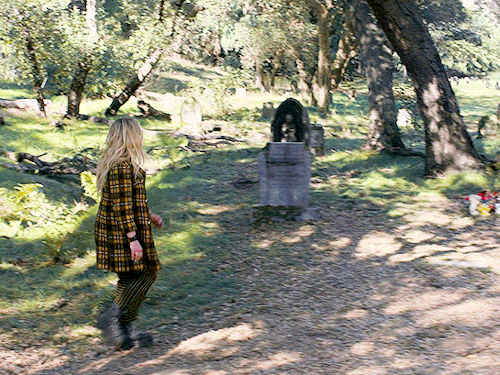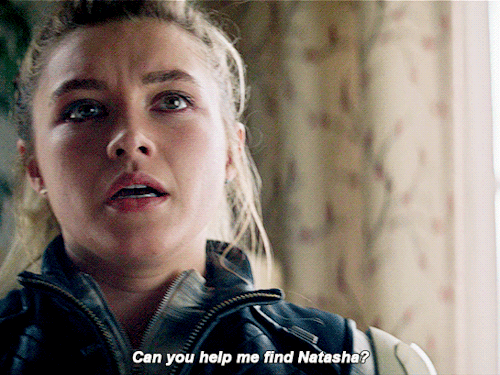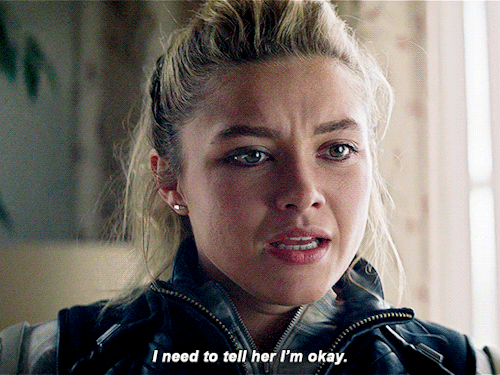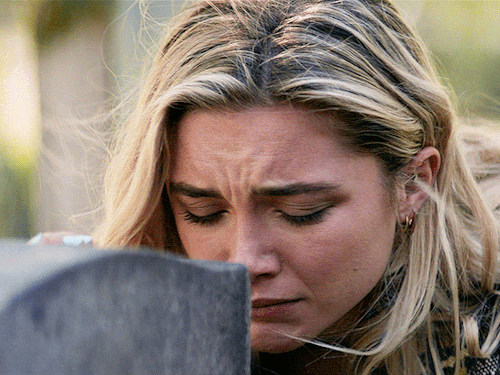I Was In There For Five Seconds, I Come Out And I’ve Lost Five Years Of My Life. HAWKEYE (2021) ||






I was in there for five seconds, I come out and I’ve lost five years of my life. HAWKEYE (2021) || BLACK WIDOW (2021)
More Posts from Luwinaforna24 and Others

hmmm

Darn it!
on the pevensies’ names
SO there’s something that always bothered me about Susan, and that was: why is she called Susan??? Peter, Edmund and Lucy’s names all have clear significance, but I never could see what about the name ‘Susan’ was important for her character
UNTIL my last reread of the Chronicles, when I spotted something in VoDT that I couldn’t BELIEVE I’d never noticed before. It’s a HUGE pointer towards what happens with whether Susan eventually returns to her belief or not, and although I’m sure I’m not the first person to have seen it, I can’t remember reading about it in any Susan’s-fate discussions before, so here goes.
Peter, Edmund and Lucy all have names with deep significance. ‘Peter’ means ‘rock’, which is clearly well suited to his role as the ‘rock’ of the family, but perhaps more importantly he’s named after Saint Peter, who in the Bible is something like the rock upon which my church is founded. The Pope sits on ‘the throne of Saint Peter’ as God’s representative on earth (for the catholic church at least), and Peter’s throne is that of the High King (CS Lewis did a little power in Narnia flowchart thing and Peter sits right below Aslan on it I think). plus the whole Peter-and-the-gate-of-heaven thing in LB.
‘Edmund’ is a two-part name, translating to ‘prosperity’ and ‘protector’. Sure, ‘protector’ is applicable because of his actions against the Witch, but his name is mostly significant because of its use in Shakespeare - in King Lear, Edmund is the name of the Duke of Gloucester’s bastard younger son, who betrays his family to gain power. Shakespeare’s Edmund is never completely redeemed, but he is an ambiguous character who can be played as really awful or quite sympathetic or a bit of both, and he’s got lots of parallels to Narnia’s Edmund.
‘Lucy’ means ‘light’ and hers is pretty straightforward - she shines the light onto the path to Narnia and to Aslan for her family.
But Susan? ‘Susan’ means ‘lily’, and for the longest time I could not for the life of me figure out why that was important. CS Lewis wouldn’t give all the others such significant names and then come to Susan and be like oh well I guess that will do, but I couldn’t find what it was. Sure, lilies are flowers traditionally used at funerals, which is a bleak bit of foreshadowing, but it didn’t seem like enough.
AND THEN
I was reading VoDT and at the end, when they get close to Aslan’s country, what do they find? A SEA OF
LILIES
and I couldn’t believe I hadn’t noticed this - that the flower on the path to Aslan’s country is the flower Susan is named for. which, combined with the foreshadowing in PC about her returning to Aslan, is a pretty strong hint about her eventual path.
If we also take a look at a compass - the sea of lilies is in the utter east. it’s heavily implied in the Narnia books that Susan’s path away from Narnia starts when she goes to America, which - from England - is a journey west, the opposite way. so Lewis is definitely paying attention to direction here. and to the east, on the pathway to Aslan’s country, he filled it with Susan’s flowers.
my whole standpoint on the problem of Susan is a bit more complicated, but I think this is a lovely whisper from Lewis about her eventually getting to rejoin her family

A Snowy Day With Edmund Would Include...
A/N: SHIT I FORGOT IT WAS DECEMBER ENJOY THE START OF 25 DAYS OF CHRISTMAS

Edmund gets cold easily but also loves the snow because he thinks it’s pretty
almost as pretty as you
You both would wake up early in the morning from the light streaming in through the windows
“Mmgh.. Bunny, close the blinds.”
“I didn’t open them, Ed.”
Once you and Edmund opened your eyes and peeked out the window, you two would see snow falling with no ground to be seen
Your eyes would light up at the sight while squeezing Edmund’s arm
“We have to go outside and make a snowman!”
“What are we? Five?”
“Yes!”
After you and Edmund get dressed and you dragged him outside, you would instantly sink into the soft yet freezing snow because of how deep it was
edmund wearing 6 layers of clothes
“Cold!”
“Darling, it’s snow!”
Edmund would laugh at you and help you out of the snow
edmund would be mesmerized about how you looked in the snow
Edmund throwing a snowball at you while started the snow man
You would look over and see Edmund acting totally oblivious
“Edmund!”
“What?”
“You know what.”
Kisses
Once you two finished the snowman, you would snatch Edmund’s hat and put it on
“Edmund Jr.”
“You couldve named him that without taking my hat, love.”
“Oh, stop whining.”
Once you two went inside, you would go to the library and sit by the fire to warm up
Edmund would bring you into his chest and pull a blanket over you two
“Your hands are like ice!”
“Well we were just outside.”
Kissing Edmund’s hands so they can ‘warm up’
The rest of the day would be spent cuddling, reading books, and drinking tea
Bonus!
Lucy walking into the library to see you and Edmund asleep on the small couch with the blankets and books scattered across the floor
“Aw... I have to get Susan. She’ll love this!”
Animal of the Day!
Chinese Giant Salamander (Andrias davidianus)

(Photo from San Deigo Zoo)
Conservation Status- Critically Endangered
Habitat- China
Size (Weight/Length)- 25 kg; 115 cm
Diet- Fish; Insects; Crayfish; Frogs; Other salamanders; Crabs
Cool Facts- The Chinese giant salamander is both the largest and rarest amphibian in the world. Completely aquatic, these giant salamanders spend the majority of their time sleeping under rocks. When not sleeping, they eat practically anything. They prefer freshwater crabs but they have been reported to engage in cannibalism. Despite their near blind state, they are expert hunters by using vibrations sensed on nodes along their spine. Females and males only live together during the breeding season and until the eggs hatch. The male protects these eggs with his life while the female hunts for food. Due a mass decline in population from population, illegal hunting, and habitat destruction, zoos and breeding facilities around the world are working to save these massive salamanders.
Rating- 13/10 (Absolutely massive, friendly friend.)
ya know like….you always hear about the classics™ authors having stupid wild shenanigans with each other. they all banded together to be dumbass chaotic english majors together. the stories are great and they’re all considered timeless genius writers….we don’t have that with modern age authors? where’s the goddamn sense of community? where’s the saucy tales of jk rowling, stephen king, james patterson and nicholas sparks locked up in an orgy cabin during a hurricane and having a writing contest. no one’s ever gotten in a fist fight with stephanie meyer. rick riordan didn’t cry face down in george r r martin’s garden after no one liked blood of olympus. jodi picoult doesn’t have a single damn calcified heart in her possession. cassandra clare and suzanne collins never had sex on a grave. neil gaiman has never gone on a week long sex-binge that would have killed him if r l stine didn’t intervene. john green has never written a book in two weeks while snorting massive amounts of cocaine. where’s the drama!!! where’s the scandal!!!! where’s the intrigue!!! modern day authors have to step it UP a notch, God dammit.
The Stellar Buddy System
Our Sun has an entourage of planets, moons, and smaller objects to keep it company as it traverses the galaxy. But it’s still lonely compared to many of the other stars out there, which often come in pairs. These cosmic couples, called binary stars, are very important in astronomy because they can easily reveal things that are much harder to learn from stars that are on their own. And some of them could even host habitable planets!

The birth of a stellar duo
New stars emerge from swirling clouds of gas and dust that are peppered throughout the galaxy. Scientists still aren’t sure about all the details, but turbulence deep within these clouds may give rise to knots that are denser than their surroundings. The knots have stronger gravity, so they can pull in more material and the cloud may begin to collapse.
The material at the center heats up. Known as a protostar, it is this hot core that will one day become a star. Sometimes these spinning clouds of collapsing gas and dust may break up into two, three, or even more blobs that eventually become stars. That would explain why the majority of the stars in the Milky Way are born with at least one sibling.
Seeing stars

We can’t always tell if we’re looking at binary stars using just our eyes. They’re often so close together in the sky that we see them as a single star. For example, Sirius, the brightest star we can see at night, is actually a binary system (see if you can spot both stars in the photo above). But no one knew that until the 1800s.
Precise observations showed that Sirius was swaying back and forth like it was at a middle school dance. In 1862, astronomer Alvan Graham Clark used a telescope to see that Sirius is actually two stars that orbit each other.

But even through our most powerful telescopes, some binary systems still masquerade as a single star. Fortunately there are a couple of tricks we can use to spot these pairs too.
Since binary stars orbit each other, there’s a chance that we’ll see some stars moving toward and away from us as they go around each other. We just need to have an edge-on view of their orbits. Astronomers can detect this movement because it changes the color of the star’s light – a phenomenon known as the Doppler effect.

Stars we can find this way are called spectroscopic binaries because we have to look at their spectra, which are basically charts or graphs that show the intensity of light being emitted over a range of energies. We can spot these star pairs because light travels in waves. When a star moves toward us, the waves of its light arrive closer together, which makes its light bluer. When a star moves away, the waves are lengthened, reddening its light.

Sometimes we can see binary stars when one of the stars moves in front of the other. Astronomers find these systems, called eclipsing binaries, by measuring the amount of light coming from stars over time. We receive less light than usual when the stars pass in front of each other, because the one in front will block some of the farther star’s light.
Sibling rivalry
Twin stars don’t always get along with each other – their relationship may be explosive! Type Ia supernovae happen in some binary systems in which a white dwarf – the small, hot core left over when a Sun-like star runs out of fuel and ejects its outer layers – is stealing material away from its companion star. This results in a runaway reaction that ultimately detonates the thieving star. The same type of explosion may also happen when two white dwarfs spiral toward each other and collide. Yikes!

Scientists know how to determine how bright these explosions should truly be at their peak, making Type Ia supernovae so-called standard candles. That means astronomers can determine how far away they are by seeing how bright they look from Earth. The farther they are, the dimmer they appear. Astronomers can also look at the wavelengths of light coming from the supernovae to find out how fast the dying stars are moving away from us.
Studying these supernovae led to the discovery that the expansion of the universe is speeding up. Our Nancy Grace Roman Space Telescope will scan the skies for these exploding stars when it launches in the mid-2020s to help us figure out what’s causing the expansion to accelerate – a mystery known as dark energy.

Spilling stellar secrets
Astronomers like finding binary systems because it’s a lot easier to learn more about stars that are in pairs than ones that are on their own. That’s because the stars affect each other in ways we can measure. For example, by paying attention to how the stars orbit each other, we can determine how massive they are. Since heavier stars burn hotter and use up their fuel more quickly than lighter ones, knowing a star’s mass reveals other interesting things too.
By studying how the light changes in eclipsing binaries when the stars cross in front of each other, we can learn even more! We can figure out their sizes, masses, how fast they’re each spinning, how hot they are, and even how far away they are. All of that helps us understand more about the universe.
Tatooine worlds

Thanks to observatories such as our Kepler Space Telescope, we know that worlds like Luke Skywalker’s home planet Tatooine in “Star Wars” exist in real life. And if a planet orbits at the right distance from the two stars, it could even be habitable (and stay that way for a long time).
In 2019, our Transiting Exoplanet Survey Satellite (TESS) found a planet, known as TOI-1338 b, orbiting a pair of stars. These worlds are tricker to find than planets with only one host star, but TESS is expected to find several more!
Want to learn more about the relationships between stellar couples? Check out this Tumblr post: https://nasa.tumblr.com/post/190824389279/cosmic-couples-and-devastating-breakups
Make sure to follow us on Tumblr for your regular dose of space: http://nasa.tumblr.com

Vietnamese Mossy Frog (Theloderma corticale), family Rhacophoridae, found in Viet Nam, south-central Laos, and southern China
photograph by Reptiles4all
The imagery of the blonde, explicitly gay ghost dancing in the Dirty Candy sequences of Julie and the Phantoms is like Kenny Ortega rectifying what was oppressed out of Ryan Evans by having the ghost of it dance with a figure both literally based on Sharpay and in-universe is nostalgia for the 2000′s Looks she inspired……..Ryan was always gay but now his explicit gayness finally gets to dance with the resurrected spirit of Sharpay….in an episode named Finally, Free….Kenny Ortega knows he’s 70 years old, and that he lived through the 50′s and 60′s as a gay youth, that worked on Pretty in Pink with a closeted Duckie and made countless gay iconography, and now, at last, in a g rated kids SHOW he finally gets to make the explicit message, and be in conversation with the past…….”I was just doing that for you guys” I KNOW YOU WERE, BABY, AND I LOVE YOU SO MUCH FOR IT!
-
 superheroessource reblogged this · 2 weeks ago
superheroessource reblogged this · 2 weeks ago -
 sawkillgirl liked this · 2 months ago
sawkillgirl liked this · 2 months ago -
 heddagab reblogged this · 2 months ago
heddagab reblogged this · 2 months ago -
 korraavaatu reblogged this · 3 months ago
korraavaatu reblogged this · 3 months ago -
 californiannostalgia liked this · 4 months ago
californiannostalgia liked this · 4 months ago -
 cora-paramore liked this · 4 months ago
cora-paramore liked this · 4 months ago -
 muchadoaboutsnap liked this · 5 months ago
muchadoaboutsnap liked this · 5 months ago -
 thewabbit liked this · 5 months ago
thewabbit liked this · 5 months ago -
 abloodygoodmess reblogged this · 5 months ago
abloodygoodmess reblogged this · 5 months ago -
 animejunki5 reblogged this · 6 months ago
animejunki5 reblogged this · 6 months ago -
 animejunki5 liked this · 6 months ago
animejunki5 liked this · 6 months ago -
 myobsessionsmyreality reblogged this · 6 months ago
myobsessionsmyreality reblogged this · 6 months ago -
 myobsessionsaremywounds liked this · 6 months ago
myobsessionsaremywounds liked this · 6 months ago -
 secondearthling reblogged this · 6 months ago
secondearthling reblogged this · 6 months ago -
 secondearthling liked this · 6 months ago
secondearthling liked this · 6 months ago -
 somefandom liked this · 6 months ago
somefandom liked this · 6 months ago -
 rhiannon-taken-by-the-sky liked this · 6 months ago
rhiannon-taken-by-the-sky liked this · 6 months ago -
 smallaviatrix liked this · 8 months ago
smallaviatrix liked this · 8 months ago -
 minitonies reblogged this · 8 months ago
minitonies reblogged this · 8 months ago -
 abloodygoodmess liked this · 8 months ago
abloodygoodmess liked this · 8 months ago -
 daenaerystargaryen reblogged this · 9 months ago
daenaerystargaryen reblogged this · 9 months ago -
 natashabuckywinterwidow reblogged this · 11 months ago
natashabuckywinterwidow reblogged this · 11 months ago -
 natashabuckywinterwidow liked this · 11 months ago
natashabuckywinterwidow liked this · 11 months ago -
 sidkneeeee reblogged this · 1 year ago
sidkneeeee reblogged this · 1 year ago -
 sidkneeeee liked this · 1 year ago
sidkneeeee liked this · 1 year ago -
 allarounddivinity reblogged this · 1 year ago
allarounddivinity reblogged this · 1 year ago -
 trickster-shi reblogged this · 1 year ago
trickster-shi reblogged this · 1 year ago -
 chapteronetobecontinued liked this · 1 year ago
chapteronetobecontinued liked this · 1 year ago -
 itseasyjusttolookaway liked this · 1 year ago
itseasyjusttolookaway liked this · 1 year ago -
 another-aveng3r reblogged this · 1 year ago
another-aveng3r reblogged this · 1 year ago -
 tess-adness liked this · 1 year ago
tess-adness liked this · 1 year ago -
 seonggi-huns reblogged this · 1 year ago
seonggi-huns reblogged this · 1 year ago -
 notquite09thereyet liked this · 1 year ago
notquite09thereyet liked this · 1 year ago -
 funkymango-anon liked this · 1 year ago
funkymango-anon liked this · 1 year ago -
 a-worthy-mystery liked this · 1 year ago
a-worthy-mystery liked this · 1 year ago -
 glorious-purple reblogged this · 1 year ago
glorious-purple reblogged this · 1 year ago -
 twolf16 liked this · 1 year ago
twolf16 liked this · 1 year ago -
 handibles liked this · 1 year ago
handibles liked this · 1 year ago -
 gamelpar liked this · 1 year ago
gamelpar liked this · 1 year ago -
 mcuslut liked this · 1 year ago
mcuslut liked this · 1 year ago -
 rcsethetics reblogged this · 1 year ago
rcsethetics reblogged this · 1 year ago -
 lunatickitty25 liked this · 1 year ago
lunatickitty25 liked this · 1 year ago -
 agent-quake-larson reblogged this · 1 year ago
agent-quake-larson reblogged this · 1 year ago -
 thatsnotmystory reblogged this · 1 year ago
thatsnotmystory reblogged this · 1 year ago -
 psychicexpertparadise liked this · 1 year ago
psychicexpertparadise liked this · 1 year ago -
 yrujelly liked this · 1 year ago
yrujelly liked this · 1 year ago -
 caillinrua reblogged this · 1 year ago
caillinrua reblogged this · 1 year ago -
 caillinrua liked this · 1 year ago
caillinrua liked this · 1 year ago

Tumblr is my guilty pleasure if you know me on real life you don't. I am not her.
160 posts